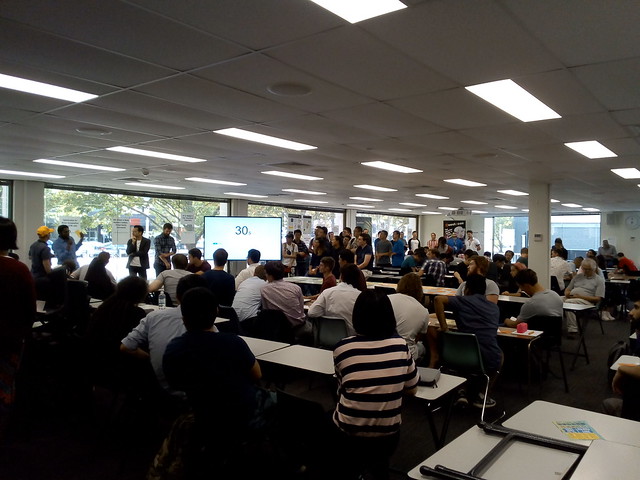 | |
| ANU TechLauncher, Team Formation Exercise, 2018 |
When a project had sufficient students, the newly formed teach would appoint two spokespersons who would register the team on a Slack channel. Those students were then free to leave. Instructors visited the forums answering questions. All unallocated students and clients then returned to Zoom for another round of pitches. The event ended when all students were allocated to a project (not all projects were successful in getting students).
This process was a reasonably direct translation from the face to face one used in previous years. Posters for projects had been placed on walls, with the client for each next to their poster pitching. Students would speak to the client and put their details on a post it note on the project poster.
One feature of Slack which might make the online process easier is the provision of video conferences in channels. This would allow students to click a link and open a video conference in Slack, rather than having to go to a web document to find the relevant conference.
However, slack and Zoom text chat have the limitation that information scrolls off the screen quickly. There was a need to keep posting some of the same information every ten minutes or so, as it was too difficult for participants to scroll back to find it (this also happened with the ACS Hackerthons using Zoom and Slack). One way around this would be to have a separate channel for very important information, or use a live web document.
Some form of status board might also be useful, with a traffic light indicator to show the progress of each project in obtaining a team.
No comments:
Post a Comment